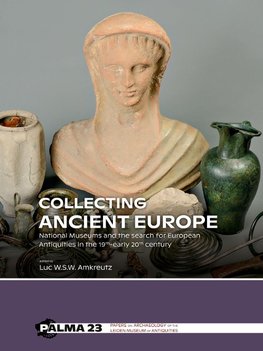
-
 Anglický jazyk
Anglický jazyk
Collecting Ancient Europe
Autor: Luc W. S. W. Amkreutz
In order to understand our past, we need to understand ourselves as archaeologists and our discipline. This volume presents recent research into collecting practices of European Antiquities by national museums, institutes and individuals during the 19th... Viac o knihe
Na objednávku, dodanie 2-4 týždne
122.14 €
bežná cena: 138.80 €
O knihe
In order to understand our past, we need to understand ourselves as archaeologists and our discipline. This volume presents recent research into collecting practices of European Antiquities by national museums, institutes and individuals during the 19th and early 20th-century, and the 'Ancient Europe' collections that resulted and remain in many museums.
This was the period during which the archaeological discipline developed as a scientific field, and the study of the archaeological paradigmatic and practical discourse of the past two centuries is therefore of importance, as are the sequence of key discoveries that shaped our field.
Many national museums arose in the early 19th century and strived to acquire archaeological objects from a wide range of countries, dating from Prehistory to the Medieval period. This was done by buying, sometimes complete collections, exchanging or copying. The networks along which these objects travelled were made up out of the ranks of diplomats, aristocracy, politicians, clergymen, military officials and scholars. There were also intensive contacts between museums and universities and there were very active private dealers.
The reasons for collecting antiquities were manifold. Many, however, started out from the idea of composing impressive collections brought together for patriotic or nationalistic purposes and for general comparative use. Later on, motives changed, and in the Dutch National Museum of Antiquities became more scientifically oriented. Eventually these collections fossilized, ending up in the depots. The times had changed and the acquisition of archaeological objects from other European countries largely came to an end.
This group of papers researches these collections of 'Ancient Europe' from a variety of angles. As such it forms an ideal base for further researching archaeological museum collection history and the development of the archaeological discipline.
Contents
Introduction
Luc Amkreutz
PART I MUSEUMS AND INSTITUTES
The archaeology of Ancient Europe in the Berlin Museum of Pre- and Early History. Acquisition policy and collection concepts from 1829 to this day
Marion Bertram
Frédéric Troyon (1815-1866) and Arnold Morel-Fatio (1813-1887): collecting European antiquities for the Musée cantonal in Lausanne (Switzerland)
Lionel Pernet
Collecting Europe. Creation, growth and networks of the Ancient Europe collection at the Leiden National Museum of Antiquities (1824-1970)
Luc Amkreutz
From Past to Future: Can an archaeological collection of comparison be relevant in the 21st century?
Christine Lorre
PART 2 SCHOLARS AND COLLECTORS
Hans Hahne and the national vision of Prehistory in central Germany (1912-1935)
Regine Maraszek
"Madness and Civilization": Dr. John Thurnam's collection of antiquities and the British Museum's collecting networks during the Victorian era (1839-1901)
Neil Wilkin
Different characters, different approaches. Collecting antiquities by J.H. Holwerda and A.E. van Giffen
Leo Verhart
PART 3 SITES AND DISCOVERIES
The exchange value of Early Bronze Age Spanish artefacts (the 'Siret collection') in the Royal Museums of Art and History in Brussels
Eugène Warmenbol and Walter Leclercq
Collecting La Tène. Practices and motivations in exchanging collections from an archaeological type site
Gianna Reginelli Servais
(Re-)collecting the Frankish Cemetery of Niederbreisig in the German Rhineland
Annemarieke Willemsen
PART 4 OBJECTS AND OUTREACH
In the curator's chair. Online participation in research on the Ancient Europe collection at the National Museum of Antiquities in Leiden, the Netherlands
Rosanne van Bodegom
- Vydavateľstvo: Sidestone Press
- Rok vydania: 2020
- Formát: Hardback
- Rozmer: 286 x 215 mm
- Jazyk: Anglický jazyk
- ISBN: 9789088909368

 Ruský jazyk
Ruský jazyk 






 Nemecký jazyk
Nemecký jazyk 


